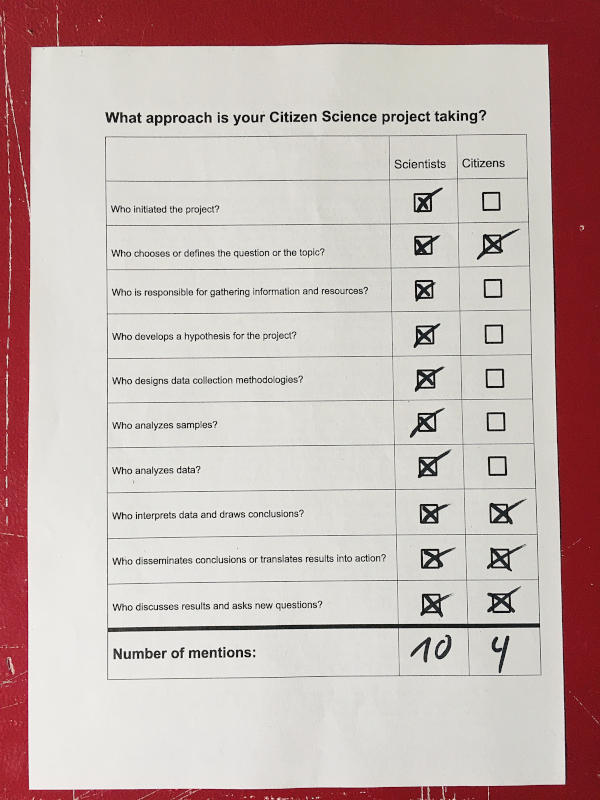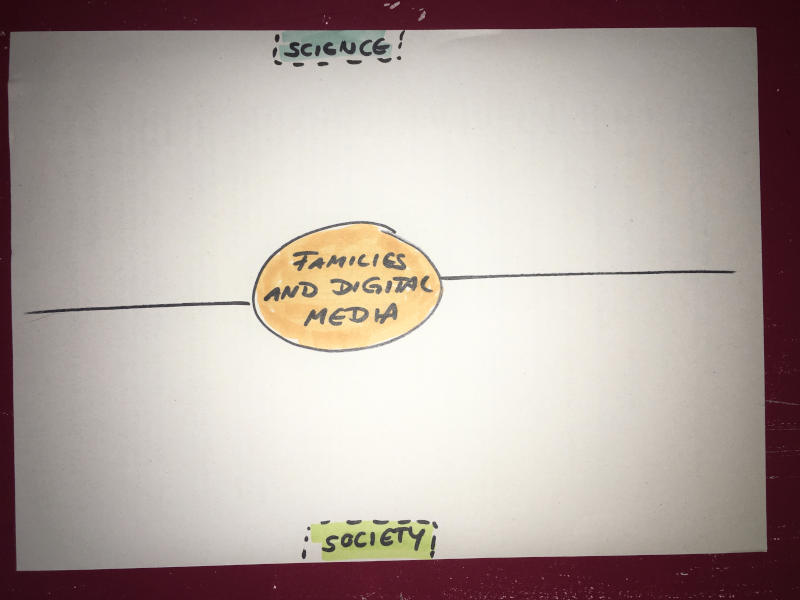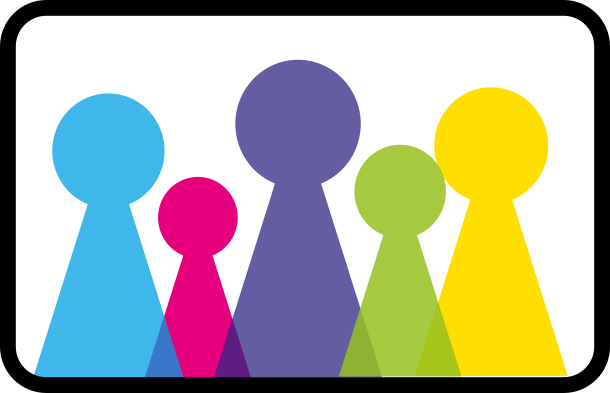Aims of the activity and description of target group
In this activity, participants evaluate Citizen Science approaches and select methods that can help them achieve their project goal. This activity introduces participants to the setup of a Citizen Science project and helps them to identify areas where the public can be involved. The activity is suitable for researchers and citizens in a group or individual learning setting. Activity 1 of Session #3 should be carried out beforehand.
Resources, Materials needed
- Paper, pen, color pencils
- Internet access + device
- Worksheet Module2_3-2-ProjectType_Questionnaire.pdf
Duration
60 minutes
Step 1 – Determine the type of Citizen Science project (15 minutes)
Take the worksheet for this activity (Module2_3-2-ProjectType_Questionnaire.pdf) and enter which areas will be worked on by which group. If one of the questions is not relevant to your project, leave it out. Count the responses and compare them with the results on the second page of the questionnaire.

Step 2 – Example for your type of Citizen Science project (10 minutes)
Watch the video showing an example of your project type alone or in a group to get a first impression of how such projects can work:
- Contributory project: Top Citizen Science Kids - Behind the News https://www.youtube.com/watch?v=8cv30CcsFjQ
- Collaborative project: Extreme Citizen Science https://yewtu.be/watch?v=VKJgrfo8JDU
- Co-created project: Roman temple ruins discovered by the local mayor in the 1970s. Locals began excavations and rebuilt the site together with scientists and public organizations. Regular events show what Roman life was like back then. (Description in English https://mimisadventuresineurope.blogspot.com/2010/05/roman-open-air-museum-villa-rustica.html) https://www.youtube.com/watch?v=Jk7o5R1vvGY
Step 3 – Look for similar projects (15 minutes)
Take 10 minutes to research the internet to see if there are already similar projects, either with a similar topic or a similar approach. Check whether:
- ...the project is identical to your plan. Perhaps you should then look for another project idea, as it would not bring any new insights.
- ...you can supplement an existing project by carrying it out either at a different location or for a different period of time.
- ...you can extend or build on an existing project. You should get in touch with the coordinators and exchange ideas with them.
- ...the methodology used matches your project. Then you can get in touch with the coordinators and discuss the methodology.
If you can't find a similar project, you seem to be on a very unique path that could lead you to create something completely new.
Step 4 – Overview of benefits and inputs (20 minutes)
Start again by drawing a central element in which you write the theme of your project. Draw a horizontal line dividing the paper into two halves. Write “Science” in the top half and “Society” in the bottom half, as we did in the last activity.

Now add arrows indicating what science and society contribute to the project. Also use arrows to indicate how science and society benefit from the project. Is the picture balanced?

Learning Outcomes - which skills are addressed?
The participants get a first impression of the tasks involved in a Citizen Science project. They learn about different levels of citizen participation and how they can categorize their Citizen Science project. Participants learn about the contributions and benefits of their project. This prepares them for the further planning of the project and also for communicating the project with stakeholders or funders.
How do you check the outcomes are reached?
- The participants are aware of the classification of the project.
- The participants are aware of the expected input and benefits of the project.
De-Briefing questions
- What do you think about the level of citizen participation in the project? Is it enough, not enough or too much?
- Is the ratio of contribution to benefit okay for both sides? Does everyone benefit sufficiently from the project?
Further links and readings
- Keyles, Shayna (2018): Citizen Science, Important Tool for Researchers. https://magazine.scienceconnected.org/2018/09/citizen-science-important-tool/ (last viewed 03/05/2024)
- Parthenos: Creating a Citizen Science Project https://training.parthenos-project.eu/sample-page/citizen-science-in-the-digital-arts-and-humanities/creating-a-citizen-science-project/#1549971728957-bd6cb671-b239 (last viewed 03/05/2024)
- Shirk, L. et al. (2012): Public Participation in Scientific Research: A Framework for Deliberate Design. https://www.researchgate.net/publication/231582171_Public_Participation_in_Scientific_Research_A_Framework_for_Deliberate_Design (last viewed 03/05/2024)
